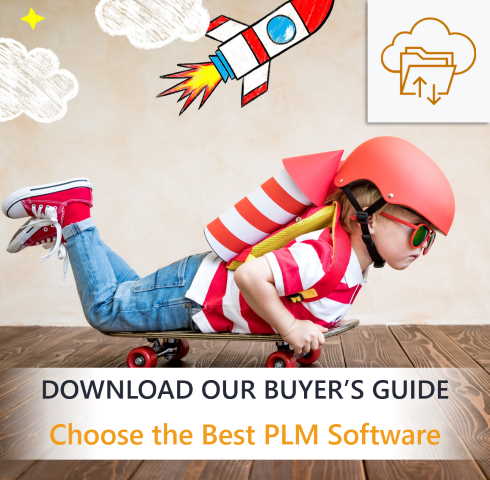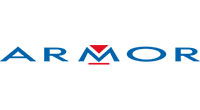
Product lifecycle management (PLM) and enterprise resource planning (ERP) are well-known solutions for consumer goods companies. But, what exactly is the role of each one? And what benefits can your business achieve through their integration?
We’ll tackle both of those questions below and delve into how to successfully integrate ERP and PLM solutions. So, your consumer goods business can unlock the competitive advantage of having both these powerful tools in your arsenal.
What’s the Difference Between PLM and ERP?
The key difference between the two software solutions arises at the data management level. Even if your ERP provides functions similar to those of a PLM, the central information being managed is different.
- An ERP focuses on the day-to-day management of your business processes, physical assets and production flows. The solution positions itself at the supply chain level, integrating purchasing, manufacturing, inventory, sales and reporting.
- A PLM focuses on the composition and interdependence between the different components of your products and the management of your “product environment” (modification, traceability, actors, etc.). The solution focuses on product innovation and is designed to help agri-food manufacturers design, develop and launch profitable products.
Inherently, this is a major difference—because the functional scope and the strength of each solution depend on the data they manage.
But, let’s avoid the classic mentality of “PLM is focused on product design and dedicated to the R&D team and the ERP solution on the product life cycle and production continuation”. Not only is this thinking counterproductive, it’s also misleading. PLM aims to be the backbone of the technical data across the entire organization, but also a vision that is several years ahead. Managing the product lifecycle starts at the idea stage and ends when operations and maintenance of the product meet dismantling and recycling.
Therefore, your PLM plays a transversal role within your company—sharing all product related knowledge across your organization.
What Are the Benefits of PLM and ERP Integration?
A PLM system strengthens the benefits of your ERP by enabling unified management of technical data. An ERP therefore relies on the product and environment knowledge provided by your PLM to optimize the flow management for manufacturing and logistics.
Increased Efficiency
Are your teams overloaded with time-consuming manual tasks? Shouldn’t their time and talent be dedicated to more important projects?
PLM and ERP integration automates the processes of updating, transferring and accessing data, in real time. With this real-time data, it is easy to detect areas for improvement and increase your team’s efficiency. Manual workarounds are minimized, and data is keyed only once—increasing accuracy and removing inconsistencies.
Simply put: you save valuable time that can be used to perform more critical tasks that rely on the skills and expertise of your employees, resulting in increased productivity.
Cost Savings
Are you spending too much on raw materials because your data isn’t properly updated? Do you have trouble identifying the best suppliers?
With increased data accuracy from the automated processes of ERP and PLM, your procurement team will be able to securely place their purchase orders, avoiding raw material shortages while saving money on readily available ones. Furthermore, you can account for lag-time and ensure on-time delivery of orders without having to expedite additional supply chain resources.
Centralized data through PLM and ERP integration provides increased visibility into your operations while highlighting potential areas for cost reduction.
A Global View of Your Information
Ready to innovate?
A PLM system manages the product repository, its multiple ramifications, and intellectual capital. As a result, your company can be more reactive–allowing you to precisely control the innovation cycle, without errors. With increasingly stringent regulations and controls, PLM is an essential and reliable source of information. With the right solution in place you can increase collaboration with your suppliers, accelerating new product development execution.
The centralized database of an ERP provides a reliable source for inventory and manufacturing data. Cluttering it with unsuccessful innovations or managing product development cycles within the solution adds a level of unnecessary complexity. But, retaining all those ideas, intentions and iterations brings an undeniable source of value for your marketing and R&D teams. The answer? Integrate the two robust solutions—PLM and ERP.
Doing so allows you to flip the complexities of supply chain and product management into a feasible task with accurate and immediate information on demand, such as production and schedule capacity, resource planning, etc. Without accurate inventory and order tracking, consumer demand is missed. Good execution management involves monitoring schedules, and most importantly, performance analysis to turn operational output into financial results.
The integration of these two tools ensures data consistency and thus allows total control of the development and launch cycle of your products.
And Of Course, Improved Collaboration
With the two solutions working together your teams will be able to:
- Facilitate the flow of data and documents between the distinct phases of product development and accelerate the transfer of information to production.
- Provide a holistic view of lifecycle and business KPIs to the company’s stakeholders.
- Share revision and version notes easily between R&D and production.
- Set alerts and document processes to deliver new products to market faster.
- Link data and documents generated between the project phase and design phases.
- Automate data entry for a single version of the product truth to track document and product versions.
How to Successfully Integrate PLM and ERP
To integrate these two systems and get the maximum benefit from each, you need to identify your priorities.
First: clearly identify the roles of each system, understand what each brings to the table, and how your company plans to use them.
Second: study the information flows, processes and needs of your company. A successful integration involves a full understanding of your data, including how and where it is stored and its real meaning.
Finally, you must define the touchpoints between PLM and ERP, choose the right technology, define the rules of the interface and then set it up. Each of these steps should be guided by a project team that consists of cross-functional managers and end-users to secure valuable input from your entire organization.
It’s clear that integrating both ERP and PLM systems can significantly boost your efficiency, innovation and collaboration. But, to reach the maximum benefit, you’ll need to choose software solutions that can scale with your business as it grows, and a provider that can support your specific industry needs—today and in the future.
To learn how Aptean’s robust PLM and ERP solutions can help your business increase efficiencies, identify cost savings, enhance visibility and improve collaboration, contact our team today.






























